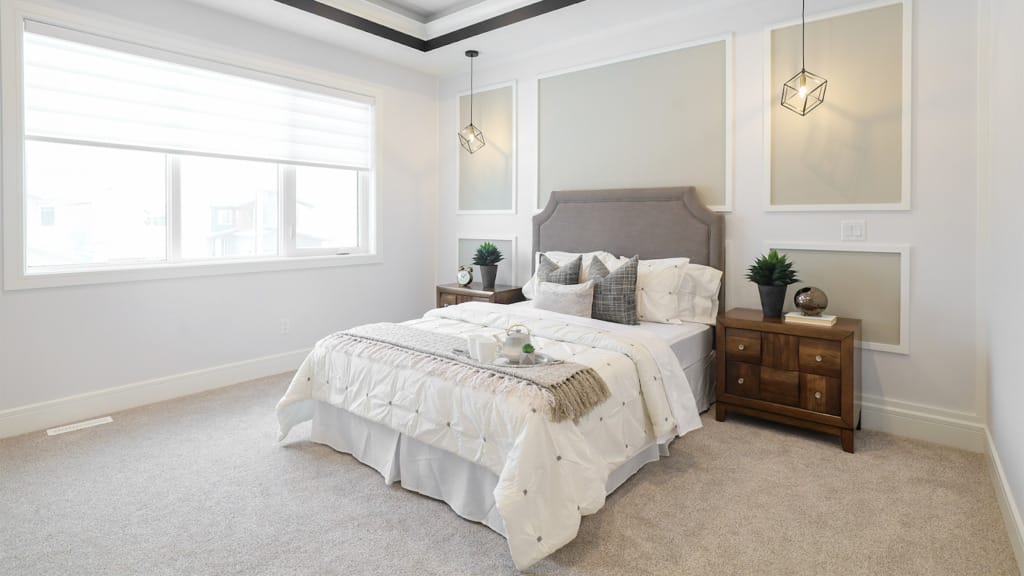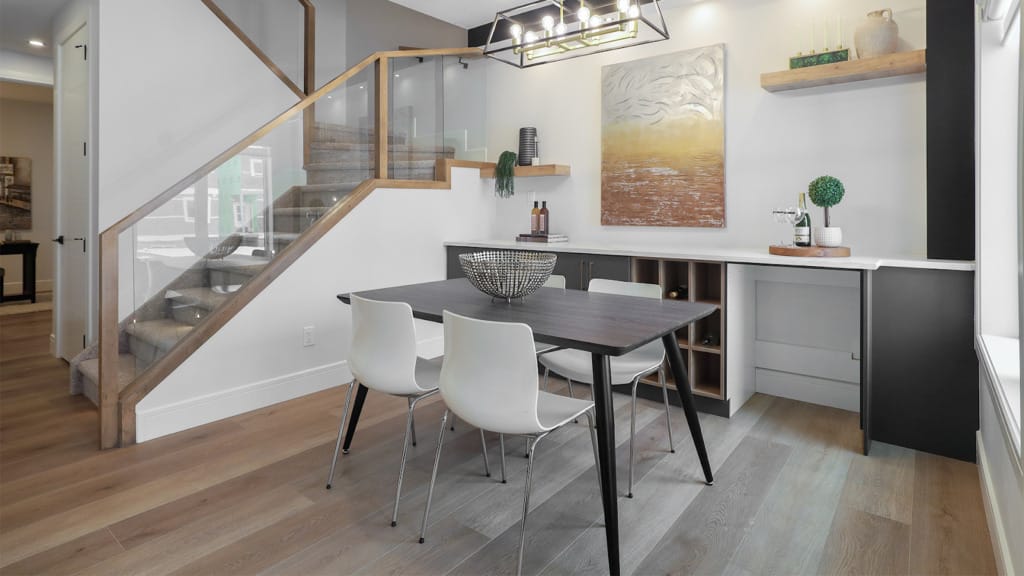So, you’ve decided to sell your home — exciting, right? But now comes the tricky part: making it look so irresistible that buyers can’t help but fall in love with it. That’s where home staging comes in.
Now, you might be wondering, “Should I stage my home while living in it, or is it better to move everything out and stage an empty space?” That’s the classic Occupied vs. Vacant Staging debate and we are here to break it down for you.
Let’s explore the pros, cons, and real-life considerations of each approach so you can make the best decision for your home (and your sanity).
Why Staging Matters More Than You Think
First impressions aren’t just important, they’re everything. Buyers typically decide within seconds if a home feels right. A beautifully staged space helps them imagine living there. It sets the mood, highlights your home’s best features, and minimizes distractions.
Staged homes photograph better, attract more interest, and often sell faster and for more money. It’s actually a marketing strategy!!
If you’re serious about making your listing stand out, home staging is a game-changer.
Occupied vs. Vacant Staging: What’s the Difference?
In simple terms:
- Occupied staging means you’re still living in the home while it’s on the market.
- Vacant staging means the home is empty and a stager brings in furniture and decor to make it look livable and inviting.
Both have their place, it’s all about what works best for your situation.
What is Occupied Home Staging?
Staging an occupied home involves styling your current space using your existing furniture (with a few design upgrades). A stager may move things around, declutter, and add small touches to enhance the look.
Why Go for It?
- Budget-friendly: You’re using what you already have — fewer rentals, less cost.
- Comfortable: You get to live at home during the selling process.
- Authentic: A lived-in space (when staged right) can feel cozy and real.
What’s the Catch?
- You’ll need to keep your space consistently clean and tidy — which can be tricky with kids, pets, or a busy schedule.
- Not all personal style appeals to buyers, so some things will need to go into storage.
- Your privacy takes a hit — buyers may come and go for showings.

Tips for Staging While Still Living in Your Home
Wondering “ Best way to stage a home for sale” Here’s the secret: less is more.
- Declutter ruthlessly — buyers need to see the space, not your stuff.
- Pack away personal items — photos, collections, fridge magnets.
- Focus on the key rooms — living room, kitchen, primary bedroom.
- Use neutral colors and textures — they photograph better and appeal to more buyers.
- Light it up — open curtains, use lamps, and make the place shine!
Need a deeper dive? We’ve got you covered here: How to Stage Occupied Homes
What is Vacant Home Staging?
Vacant staging is exactly what it sounds like: staging a completely empty home using rented furniture and accessories. It gives professional stagers total design freedom — think of it like a blank canvas ready to be turned into a masterpiece.
What Makes It Great?
- Every room is styled with intention — nothing is left to chance.
- Buyers see clear function and layout — no guessing if a room fits a king-size bed.
- Photos look polished — perfect for online listings.
Any Downsides?
- It’s more expensive — furniture rental, transport, setup, breakdown.
- If not done professionally, the space can still feel cold or generic.
- You may need to stage multiple rooms for consistency (which adds to the cost).
How to Stage a Vacant Home Like a Pro
Want to make a big impression with an empty house? Here’s how to do it right:
- Focus on high-impact areas — living room, main bedroom, and kitchen.
- Use soft touches like rugs, pillows, and throws to warm up the space.
- Don’t forget lighting and mirrors — they make small spaces feel bigger.
- Add subtle scent and sound — think essential oils and background music during open houses.
Need help? Our vacant home staging services can handle it all.
Side-by-Side: Occupied vs. Vacant Staging
| Factor | Occupied Staging | Vacant Staging |
| Cost | Lower (minimal rentals) | Higher (furniture + decor rental) |
| Convenience | You stay in your home | Requires moving out |
| Design flexibility | Limited to your belongings | Full design control |
| Buyer impression | Warm, lived-in vibe | Sleek, showroom feel |
| Effort from homeowner | High — daily cleaning & decluttering | Low once setup is done |
Cost of Occupied vs. Vacant Staging
The cost of occupied vs. vacant staging varies widely depending on your location and needs:
- Occupied staging may range from $300 to $1,000, especially if minimal rental items are used.
- Vacant staging can cost anywhere from $1,500 to $5,000, including furniture rental, design fees, and duration of display.
Investing in professional home staging services can pay off by boosting your home’s perceived value and speeding up the sale process.
Explore pricing options with us: Home Staging Edmonton
Time, Effort & Buyer Perception
When it comes to staging strategies for faster sales, both methods can be successful when executed properly.
- Occupied homes require ongoing cleaning and upkeep. However, if staged well, they offer buyers a sense of real-life livability.
- Vacant homes are easier to stage quickly and photograph beautifully, but may lack the warmth of a lived-in property unless styled with care.

Choosing the Best Staging Method for You
What’s the right choice in the debate between Occupied vs. Vacant Staging? Well, there’s no one-size-fits-all answer. Ask yourself:
- What’s my budget?
- Am I living in the home during the sale?
- How fast do I want it sold?
- Is my furniture in great shape, or outdated?
- Can I commit to keeping things spotless daily?
If you’re unsure, a professional consultation can help you decide. Check out our home staging services to explore your options.
Professional Staging vs. DIY: Should You Hire Help?
Here’s the truth: staging is about more than just pretty pillows. It’s about strategy.
A professional stager knows how to:
- Highlight your home’s best features
- Downplay flaws
- Understand what today’s buyers are looking for
If you’re thinking of DIY-ing it, make sure you:
- Follow a room-by-room checklist
- Study what homes in your area look like when staged
- Avoid over-styling — buyers want to see space, not just stuff
Want expert results without the stress? Our pros are just a click away:Check out our services here
Final Thoughts: It’s Not Just About Looks — It’s About Selling Smarter
Whether you go with occupied or vacant staging, the goal is the same: show your home in the best possible light. You don’t need to go overboard — but you do need to be strategic.
Still on the fence in the Occupied vs. Vacant Staging war ? Let’s talk about what works best for your home. Visit The Staging Place — your dream buyer could be one perfect photo away.
FAQs
Q: Does staging a home really help it sell faster?
Yes, absolutely. Staged homes can sell 3–30% faster and often for higher offers because they help buyers make an emotional connection.
Q: How much does professional home staging typically cost?
It depends on your location and needs. Occupied staging may cost a few hundred dollars, while vacant staging can range from $1,500–$3,000+ depending on how many rooms are staged and for how long.
Q: Can I stage my home effectively while living in it?
You sure can — with some effort! Decluttering, neutralizing décor, and working with a professional can transform your lived-in space into a buyer magnet.
Q: What are the biggest challenges of vacant home staging?
The main ones are cost, and the risk of creating a cold, impersonal vibe if staging is minimal or mismatched. Done right, though, it wows buyers.
Q: Should I hire a stager or try DIY staging?
If your goal is a quicker sale and higher offers — hire a pro. If you’re on a tight budget, you can try DIY, but follow expert guidance and don’t cut corners.


